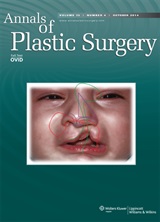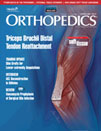Journal Publications
 Annals of Thoracic Surgery
Annals of Thoracic Surgery
October 2015. http://dx.doi.org/10.1016/j.athoracsur.2015.06.044.
Park KU, Moquin K
Novel Use of External Tissue Expander for Management of Sternal Wound Dehiscence
Sternal wound dehiscence and its associated complications contribute to significant morbidity and mortality after coronary bypass operations. We present the novel use of continuous external tissue expansion to achieve delayed primary closure of a previously dehisced sternal wound.
To review on the publisher’s website, click here.
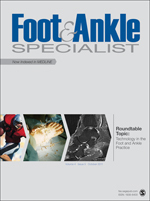 Foot Ankle Specialist
Foot Ankle Specialist
August 2015. pii: 1938640015598839.
Huh J, Parekh SG
Use of a Continuous External Tissue Expander in Total Ankle Arthroplasty: A Novel Augment to Wound Closure.
This is the first description of the use of an external tissue expander for the prevention of wound healing complications in the setting of TAA. Since introducing CETE to the closure of our TAA incisions, we have seen a decrease in the number of postoperative wound complications and time to wound healing. Based on our experience, we believe that the use of CETE for the prophylactic management of tenuous surgical incisions, specifically those used in the anterior approach to the ankle during TAA, is both safe and efficacious.READ MORE
To review on the publisher’s website, click here.
 Microsurgery
Microsurgery
September 2014 (DOI: 10.1002/micr.22326)
Alex Senchenkov M.D., Richard L. Agag M.D., Johnson Lee M.D., Ashit Patel M.D., Ian L. Valerio M.D., M.S., M.B.A.
Management of anterolateral thigh free Flap donor site defects with a continuous external tissue expander
This retrospective study in 20 ALT cases found that the use of a CETE device was effective in achieving staged direct (tertiary) closure and avoiding skin grafting, which further decreased donor site morbidity of large ALT free flap reconstructions.READ MORE
To review on the publisher’s website, click here.
Annals of Plastic Surgery
August 2014 (Vol. 73, Issue 2, pp 183-189)
Fleming ME, O’Daniel A, Bharmal H, Valerio I.
Application of the orthoplastic reconstructive ladder to preserve lower extremity amputation length.
Applying various concepts, including DermaClose, to the reconstructive ladder may allow for viable soft tissue coverage to maximize functional outcome…READ MORE
To review on the publisher’s website, click here.
 Regenerative Medicine
Regenerative Medicine
2014 Mar;9(2):179-90. doi: 10.2217/rme.13.96.
Fleming ME, Bharmal H, Valerio I.
Regenerative medicine applications in combat casualty care.
The purpose of this report is to describe regenerative medicine applications in the management of complex injuries sustained by service members injured in support of the wars in Afghanistan and Iraq. Improvements in body armor, resuscitative techniques and faster transport have translated into increased patient survivability and more complex wounds. Combat-related blast injuries have resulted in multiple extremity injuries, significant tissue loss and amputations. Due to the limited availability and morbidity associated with autologous tissue donor sites, the introduction of regenerative medicine has been critical in managing war extremity injuries with composite massive tissue loss. Through case reports and clinical images, this report reviews the application of regenerative medicine modalities employed to manage combat-related injuries. It illustrates that the novel use of hybrid reconstructions combining traditional and regenerative medicine approaches are an effective tool in managing wounds. Lessons learned can be adapted to civilian care. READ MORE
To review on the publisher’s website, click here.
Orthopedics
February 2013( 36 (2), e249-51)Formby P, Flint J, Gordon WT, Fleming M, Andersen RC;
Use of a Continuous External Tissue Expander in the Conversion of a Type IIIB Fracture to a Type IIIA Fracture
Various methods have been used for soft tissue coverage of Gustilo-Anderson type IIIB open fractures. These injuries are often contaminated and, by definition, are associated with extensive periosteal stripping and inadequate soft tissue coverage. These characteristics predispose the patient to infection, delayed union, nonunion, and the likelihood of multiple surgeries to achieve durable soft tissue coverage. READ MORE
To review on the publisher’s website, click here.
Annals of Plastic Surgery
October 2012 (Vol. 69, Issue 4, pp 418-421)
Gabriel F. Santiago, MD,* Benjamin Bograd, MD,* Patrick L. Basile, MD,*Þþ Robert T. Howard, MD,*Þ Mark Fleming, DO,* and Ian L. Valerio, MD, MS, MBA*Þþ
Soft Tissue Injury Management With a Continuous External Tissue Expander
Overall time to wound coverage ranged from 1 to 6 days, with mean time to definitive wound coverage being 4.4 days. The mean decrease in wound surface area in this group was 74.3%…READ MORE
To review on the publisher’s website, click here.
 Archives of Facial Plastic Surgery
Archives of Facial Plastic Surgery
September 2012
Ashley G. O’Reilly, MD; William R. Schmitt, MD; Randall K. Roenigk, MD; Eric J. Moore, MD; Daniel L. Price, MD Arch Facial Plast Surg.
Published online September 03, 2012. doi:10.1001/archfacial.2012.662
Closure of Scalp and Forehead Defects Using External Tissue Expander
To describe the novel use of an external tissue expander in the reconstruction of scalp and forehead defects. A prospective review was performed on 7 patients who underwent extirpation of head and neck malignant neoplasms resulting in scalp and forehead defects. Reconstruction was performed using an external tissue expander device. Patient clinical factors, defect size, and photographs were collected. READ MORE
To review on the publisher’s website, click here.
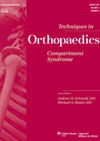 Techniques in Orthopaedics
Techniques in Orthopaedics
March 2012
MAJ Benjamin K. Potter, MD*, LTC Brett A. Freedman, MD** & Michael S. Shuler, MD***
From the *Walter Reed National Military Medical Center, Bethesda, MD, **Landstuhl Regional Medical Center, Landstuhl, Germany and ***Athens Orthopedic Clinic, Athens, GA.
Fasciotomy Wound Management and Closure
“We prefer to manage the fasciotomy incisions with concurrent VAC dressings and dermatotraction. These devices are changed, generally in the operating suite during a concurrent procedure and with a quick irrigation and debridement, every 2 to 3 days until wound closure is achieved or the wound bed appears pristine and ready for skin grafting.”Article describes preferred method for closing fasciotomy wounds.
To review on the publisher’s website, click here.
Otolaryngology — Head and Neck Surgery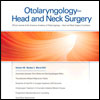
2011
External tissue expansion is a safe and alternative technique to close large scalp defects that would otherwise require skin grafting or free flap reconstruction in appropriately selected patients, and can be achieved in a relatively short period of time. Read more »
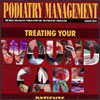 Podiatry Management
Podiatry Management
August 2010
The World Health Organization and the International Diabetes Federation have stated that nearly 85% of diabetes-related amputations are preventable. While it requires a necessary technical skill set to perform complex interventions to save the diabetic foot from amputation, limb salvage is largely a “mental game.”Read more »
 American Society of Podiatric Medical Assistants
American Society of Podiatric Medical Assistants
Quarter Two – 2010
Tissue expansion is an important technique for reconstruction of soft tissue defects. It is commonly used in the care of burns, breast re-construction and pediatric plastic surgery. The phenomenon of tissue expansion is well known and observed in pregnancy. Read more »
 Journal of Drugs in Dermatology
Journal of Drugs in Dermatology
February 2010
Here the authors describe a unique dual approach to treatment of MPTT in both the excision and wound revision phases. First, Mohs micrographic surgery is utilized for more discrete removal of malignant tissue, as opposed to wide excision. Then, a novel device, DermaClose RC (Wound Care Technologies, Chanhassen, MN), is used in wound revision, a device that has proven to be more effective in promoting wound closure as opposed to traditional suturing. Read more »
 Podiatry Management
Podiatry Management
January 2010
Up to 25% of those with diabetes will develop a foot ulcer during their lifetime. Foot ulcers allow bacteria a portal of entry which can lead to infection, and an infected wound is a significant risk factor for limb loss. Eighty-four percent of lower extremity amputations are preceded by a foot ulcer. Read more »
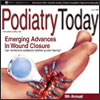 Podiatry Today
Podiatry Today
July 2009
Given the potential complications associated with chronic wounds in high-risk patients, the authors debate the merits of different approaches to wound closure and explore emerging concepts in the combination of mechanical assistance and tissue expansion to facilitate improved healing. Read more »
 Podiatry Internet Journal
Podiatry Internet Journal
November 2007
The DermaClose® RC tissue expander allows for closure of large defects without the need for traditional complex skin closure, tissue grafting or creation of skin and tissue flaps. Skin anchors made of surgical steel clips are used with a tension controller to allow for gentle skin stretching on the subcutaneous planes of the wound or defect. Read more »
 American Society for Dermatologic Surgery
American Society for Dermatologic Surgery
October 2007
In this case series, the external tissue expansion device facilitated closure of surgical defects that would otherwise require flap or long complex linear closures. In a majority of cases, undermining was not required. The device was well tolerated, final cosmetic appearance was good to excellent, and final wound lengths were significantly shortened. Read more »
Clinical Posters
 Use of a Continuous External Tissue Expander in the Conversion of a Type-IIIB Fracture to a Type-IIIA Fracture
Use of a Continuous External Tissue Expander in the Conversion of a Type-IIIB Fracture to a Type-IIIA Fracture
2012
We describe an individual treated at our instituition with an external tissue expander for the conversion of Type-IIIB Gustilo and Anderson tibia fracture to Type-IIIA fracture. Read more »
 Staged Closure of a Giant Omphalocele Using an External Tissue Expander and an Acellular Matrix
Staged Closure of a Giant Omphalocele Using an External Tissue Expander and an Acellular Matrix
2011
We report the case of a full term male born with a giant omphalocele which ruptured at delivery. The sac contained all of the small and large bowel as well as the liver. The abdominal wall defect measured 15 cms and encompassed the entirety of the anterior abdominal wall. Read more »
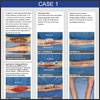 SAWC Clinical Poster
SAWC Clinical Poster
Spring 2010
The purpose of this case series is to report the effectiveness of continuous external tissue expansion (CETE) as a method of fasciotomy wound closure. Primary closure of fasciotomy wounds can be difficult due to edema and tissue retraction. Read more »
2009
Six patients who had the DermaClose® RC system applied to obtain primary closure of postoperative wounds were studied retrospectively. Past medical history, age, sex, location of the wound, pre and post operative wound size, and duration of application of the DermaClose™ system was recorded for each patient. Read more »

